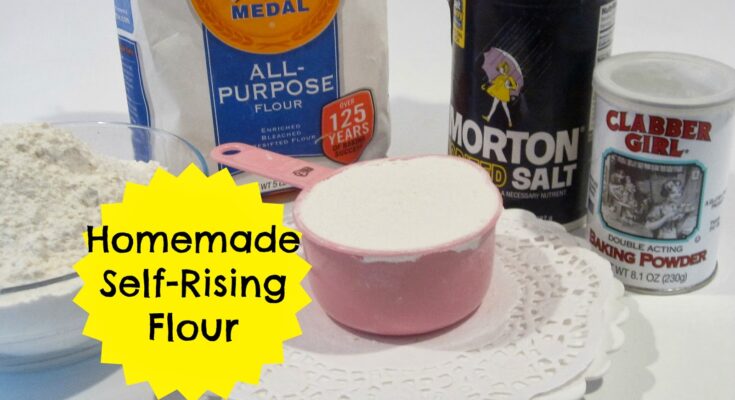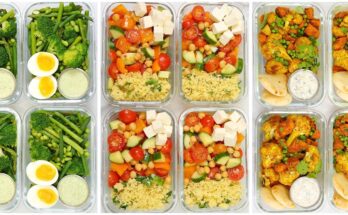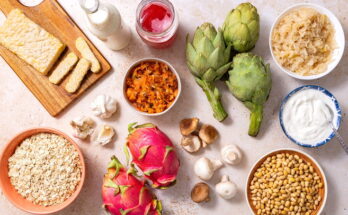Self Rising Flour Recipe: Self-rising flour is a staple in baking, widely loved for its ability to produce light, fluffy baked goods without the need for additional leavening agents. If you’ve ever wondered why your biscuits rise so perfectly or your pancakes turn out light and airy, self-rising flour is often the secret ingredient. But did you know you can make it at home in just a few minutes? It’s cost-effective, customizable, and ensures you never run out when inspiration strikes.
Whether you’re an occasional baker or a seasoned pro, learning how to make self-rising flour at home is a game-changer. This guide will walk you through everything you need to know, from the ingredients and tools to step-by-step instructions.
Ingredients for Homemade Self-Rising Flour
Making self-rising flour is simple and requires just three basic pantry staples:
- All-Purpose Flour: The base of the mix, providing structure and texture.
- Baking Powder: This is the leavening agent that helps your baked goods rise.
- Salt: Adds flavor and balances the sweetness in recipes.
These three ingredients work together harmoniously, creating a foolproof mix that eliminates the need to measure baking powder and salt separately every time you bake.
Tools and Equipment Needed
Before you get started, gather the following tools to ensure the process is quick and efficient:
- Mixing Bowl: A medium-sized bowl works perfectly for mixing the ingredients.
- Measuring Cups and Spoons: Accurate measurements are crucial for baking.
- Whisk or Sifter: A whisk helps distribute the ingredients evenly, while a sifter ensures a smooth, lump-free blend.
Having these tools ready will save you time and ensure your self-rising flour is perfectly blended.
The Perfect Self-Rising Flour Recipe
Here’s the basic recipe for homemade self-rising flour:
Ingredients for 1 Cup of Self-Rising Flour:
- 1 cup all-purpose flour.
- 1 1/2 teaspoons baking powder.
- 1/4 teaspoon salt.
For Larger Batches:
- 2 cups all-purpose flour, 3 teaspoons baking powder, and 1/2 teaspoon salt.
- 4 cups all-purpose flour, 6 teaspoons baking powder, and 1 teaspoon salt.
Dietary Adjustments:
- For gluten-free self-rising flour, simply use a gluten-free all-purpose flour mix.
- Reduce or omit salt if you’re watching sodium intake.
Step-by-Step Instructions
Making your own self-rising flour is easy if you follow these steps:
Step 1: Measure the Ingredients Accurately
Precision is key in baking. Use a kitchen scale if possible for the flour and level off your measuring spoons for the baking powder and salt. A slight excess or deficit in any ingredient can affect the final product.
Step 2: Combine the Ingredients
In a mixing bowl, combine the measured flour, baking powder, and salt. Ensure the ingredients are proportioned correctly to avoid uneven rising in baked goods.
Step 3: Sift or Whisk Thoroughly
Use a whisk or a sifter to mix the ingredients. This step is crucial to distribute the baking powder and salt evenly throughout the flour, ensuring consistent results in every batch.
Pro Tip: If you’re making a large batch, consider whisking in stages to maintain even distribution.
Storage Tips for Homemade Self-Rising Flour
To keep your self-rising flour fresh and effective:
- Store it in an airtight container to prevent moisture and air exposure.
- Keep it in a cool, dry place, away from direct sunlight.
- Label the container with the date to track freshness, as baking powder can lose potency over time.
Avoid refrigerating the flour unless you’re in a highly humid climate, as condensation can cause clumps.
Applications of Self-Rising Flour
Self-rising flour is a versatile ingredient used in a wide range of recipes, such as:
- Biscuits: Achieve fluffy, buttery layers with ease.
- Pancakes: Enjoy light, airy pancakes every time.
- Cakes: Perfect for sponge cakes and cupcakes.
Unlike regular all-purpose flour, self-rising flour eliminates the need to add separate leavening agents, simplifying your baking process.
Substitutes for Self-Rising Flour
If you’re out of self-rising flour, here’s how to substitute:
- Mix 1 cup all-purpose flour, 1 1/2 teaspoons baking powder, and 1/4 teaspoon salt.
- If you don’t have baking powder, use 1/4 teaspoon baking soda and add 1/2 teaspoon vinegar or lemon juice to your wet ingredients.
This substitute works well for most recipes but may slightly alter the flavor or texture.
Troubleshooting Common Issues
Having problems with your self-rising flour? Here’s how to solve them:
- Flat Baked Goods: Check if your baking powder is expired. Always use fresh ingredients for best results.
- Clumpy Mixture: Sift the flour again to remove lumps and redistribute the ingredients.
Tips for Achieving the Best Results
- Always sift your flour to ensure even mixing.
- Measure ingredients carefully to maintain the correct ratios.
- Experiment with small batches to perfect your technique.
FAQs about Self-Rising Flour Recipe
1. What is self-rising flour?
Self-rising flour is a pre-mixed combination that includes all-purpose flour, baking powder, and salt. The baking powder acts as a leavening agent, allowing baked goods to rise without the need for additional leavening ingredients.
2. Can I make my own self-rising flour?
Yes, you can make your own self-rising flour. For each cup of all-purpose flour, add 1 1/2 teaspoons of baking powder and 1/4 teaspoon of salt. Mix well to ensure the ingredients are evenly distributed.
3. How do I store self-rising flour? 3. How do I store self-rising flour?
Store self-rising flour in a cool, dry place, sealed tightly to keep out moisture and pests. For longer shelf life, you can also store it in an airtight container in the refrigerator.
4. Can self-rising flour replace all-purpose flour in recipes?
Self-rising flour can replace all-purpose flour in recipes that call for additional leavening agents. If your recipe already includes baking powder and salt, you may need to adjust these ingredients accordingly when using self-rising flour.
5. What types of recipes work best with self-rising flour?
Self-rising flour is ideal for baking recipes that require a light, airy texture, such as cakes, muffins, pancakes, and biscuits. It simplifies the baking process by eliminating the need for separate leavening additions.
6. Is there a gluten-free version of self-rising flour?
Yes, gluten-free self-rising flour is available, and you can also make it at home by substituting all-purpose flour with a gluten-free blend and adding leavening agents and salt as per the usual ratio.
Conclusion
Making self-rising flour at home is not only simple but also incredibly practical. With just three pantry staples, you can create a reliable mix that takes your baking to the next level. Whether you’re whipping up biscuits or pancakes, this guide ensures you’ll never have to worry about running out of this essential ingredient again.



